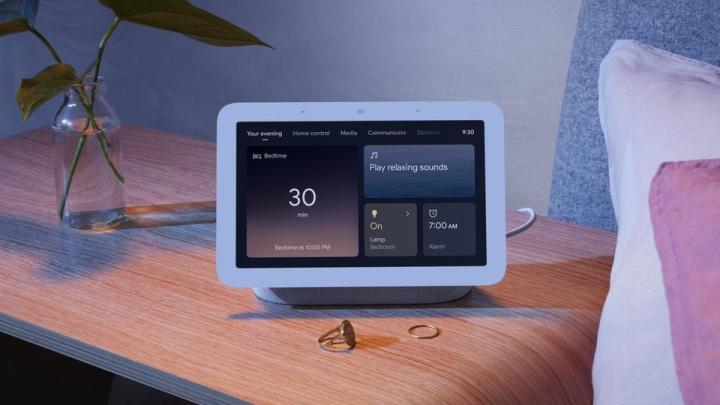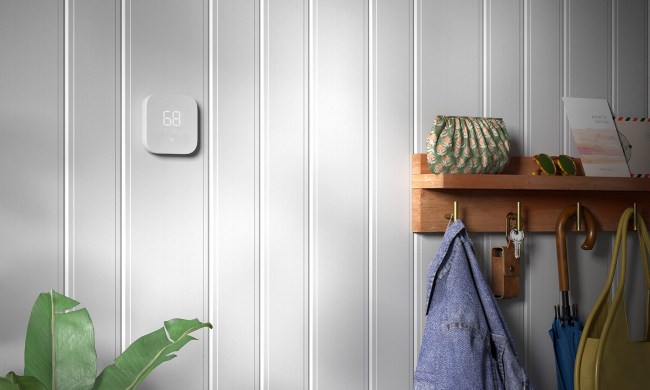Let’s address the two-dozen little elephants in the room: Swapping all of my smart home devices to a new Wi-Fi network should not be as annoying as it is. I recently switched to a new router, which means the SSID (network name) changed. Every smart device in my home had to be reconnected to the new network, but what I found is that there is no cohesive way to do that.
This is further exacerbated by the fact that certain devices, like the Amazon Echo, require you to press a physical button on the device as part of the change. Smart home technology is only as smart as its weakest link, and the difficulty in swapping networks is unnecessarily frustrating.
Smart home tech needs to be accessible in one place
A smart home hub should function as a central control, rather than just a way to quickly control devices. The most-used system in my home is Alexa, and I use the Alexa app to monitor and control the majority of devices throughout my home. If the device is Amazon-branded, I can change its network through the Alexa app.

However, with any other brand, I have to download that specific app just to tweak a few settings. Some of these apps I no longer have on my phone. Take TP-Link as an example. I used it to set up several smart plugs, but that was two years ago. The plugs can all be controlled through the Alexa app, so when I upgraded my phone, I never downloaded the TP-Link app. There was — and should still be — no need.
If I can control a device through Alexa, I should also be able to change its Wi-Fi network through Alexa. If my Echo Show acts as a smart home hub, compatible devices should grant full and total control from the hub — not doing so negates the purpose of using a hub.
Smart home products should connect to the phone’s Wi-Fi
I have never used anything except my mobile device to set up a smart home product. Sure, it could be done using a tablet or an iPad, but the phone is the default system. Why, then, do the devices not automatically opt to connect to the phone’s network during the setup phase?
Some devices do ask if you’d like to connect to the current network, and that’s a step in the right direction. Others create their own local area network for the purpose of setting up the device, a step that has only ever created further complications.
If my phone is connected to a given Wi-Fi network as I’m setting up a smart home device, it should automatically choose that network rather than asking. A secondary selection screen that confirms the choice would be acceptable in case I had a secondary home network that I preferred the devices be on, but then again, why wouldn’t my phone also be on that network?
I do not want to reset devices when I switch networks
Another huge annoyance lies in smart home devices that have to be reset when you swap networks. My Google Nest Hub is like this; when I swap it to a different Wi-Fi network, I sometimes have to reset the entire device and wipe it of all settings. It’s tedious enough to manually change the Wi-Fi address in each device — going through the setup process as well just makes it worse.

Although many device settings are stored on my phone, if I have to remove the device from the app and delete it from the home setup to be able to reinstall it, I lose those settings. Glitches happen from time to time, but the consistency with which Nest products have required this step is infuriating.
The root of the problem lies in the programming of the devices, but also in the networking. If your Wi-Fi network goes down, you cannot easily control your smart home devices without erasing them and putting them into setup mode again.
If I could control my products through Bluetooth as easily as through Wi-Fi, the loss of a network wouldn’t eliminate my ability to control them. It would also allow my smart home devices to work if the internet were down. A lot of devices can be controlled through both Bluetooth and Wi-Fi, but it’s an odd oversight that they can’t all be controlled this way.
Matter hopefully poses a solution
Despite encountering this problem on numerous occasions, I can’t think of a solution that properly addresses the connectivity issues. The only platform that offers any real solution is Matter.
The Matter Protocol has generated a lot of excitement in the smart home world. Many users place a lot of their hopes in this platform and its promises to tear down the walled gardens of the Alexa, Google Assistant, and HomeKit ecosystems. Matter promises to facilitate greater connectivity between smart home devices, even those that traditionally have not worked together.
This improved connectivity might be able to do away with the need to set up devices through individual apps. At the very least, it might allow users to set up smart home devices through a hub — and that would handle a lot of the issues with swapping from one Wi-Fi network to another.
No one is quite sure how Matter will work in practice. The ideal solution would be a unique way of transmitting data and information to all of your devices at once through a hub. The Amazon Echo Show is one of the few devices that you set up entirely on-device thanks to its screen. It can also act as a hub. If these features were somehow combined, it might be possible to change the Wi-Fi network on all of your smart home devices at one time.
Again, this is speculation — the desperate search for an answer from someone who has grown tired of the tedium. At this point, I could enter my Wi-Fi name and password with my eyes closed and both hands tied behind my back. Swiping the text into my phone has become as familiar as my own signature. There has to be an easier solution.
Smart home technology has come a long way from its early days, when installation and control were much more difficult and opaque. Even with that in mind, I feel like it still has a long way to go before these small issues are completely dealt with.



